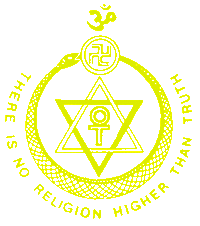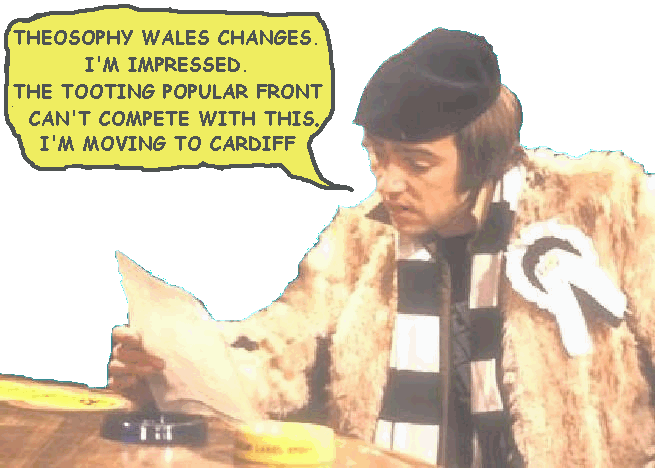HORNET

The
Wolseley Hornet 1960s model
An
upmarket version of the Mini
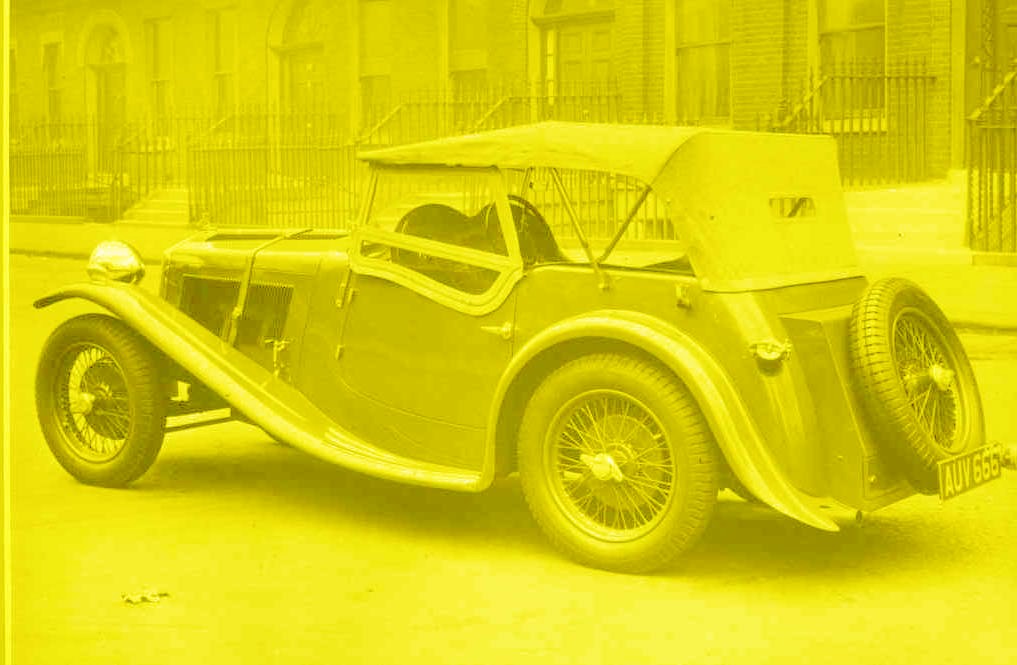
A
1930s Wolseley Hornet sports car
The
bodywork for these was made to order by a coachbuilder
of
the customer’s choice and there were many variations of this car.
The
series ran from 1930 to 1935
The Wolseley Hornet both in its 1930s sports
car
incarnation, and its 1960s posh mini version,
has
very little (in fact nothing) to do with Theosophy
but we have found that Theosophists and new
enquirers do like pictures of classic cars
and we get a lot of positive feedback.
You can find Theosophy Wales groups
in
Bangor, Cardiff, Conwy & Swansea
Theosophy Wales has no controlling
body
and is made up of independent groups

________________________
The
Ancient Wisdom
by
Annie
Besant
Karma
Having traced
the evolution of the soul by the way of reincarnation, we are now in a position
to study the great law of causation under which rebirths are carried on, the
law which is named Karma. Karma is a Sanskrit word, literally meaning
"action"; as all actions are effects flowing from preceding causes,
and as each effect becomes a cause of future effects, this idea of cause and
effect is an essential part of the idea of action, and the word action, or
karma, is therefore used for causation, or for the unbroken linked series of
causes and effects that make up all human activity.
Hence the
phrase is sometimes used of an event, "This is my karma," i.e.,
"This event is the effect of a cause set going by me in the past." No
one life is isolated! It is the child of all the lives before it, the parent of
all the lives that follow it, in the total aggregate of the lives that make up
the continuing existence of the individual.
There is no
such thing as "chance" or as "accident"; every event is
linked to a preceding cause, to a following effect; all thoughts, deeds,
circumstances are causally related to the past and will causally influence the
future; as our ignorance shrouds from our vision alike the past and the future,
events often appear to us to come suddenly from the void, to be
"accidental," but this appearance is illusory and is due entirely to
our lack of knowledge. Just as the savage, ignorant of the laws of the physical
universe, regards physical events as uncaused, and the results of unknown
physical laws as "miracles"; so do many, ignorant of moral and mental
laws, regard moral and mental events as uncaused, and the results of unknown moral
and mental laws as good and bad "luck."
When at first
this idea of inviolable, immutable law is a realm hitherto vaguely ascribed to
chance dawns upon the mind, it is apt to result in a sense of helplessness,
almost of moral and mental paralysis. Man seems to be held in the grip of an
iron destiny, and the resigned "kismet" of the Moslem appears to be
the only philosophical utterance. Just so might the savage feel when the idea
of physical law first dawns on his startled intelligence, and he learns that
every movement of his body, every movement in external nature, is carried on
under immutable laws.
Gradually he
learns that natural laws only lay down conditions under which all workings must
be carried on, but do not prescribe the workings; so that man remains ever free
at the centre, while limited in his external activities by the conditions of
the plane on which those activities are carried on.
He learns
further that while the conditions master him, constantly frustrating his
strenuous efforts, so long as he is ignorant of them, or, knowing them, fights
against them, he masters them and they become his servants and helpers when he
understands them, knows their directions, and calculates their forces.
In truth
science is possible only on the physical plane because its laws are inviolable,
immutable. Were there no such things as natural laws, there could be no
sciences. An investigator makes a number of experiments, and from the results
of these he learns how Nature works; knowing this, he can calculate how to
bring about a certain desired result, and if he fail in achieving that result
he knows that he has omitted some necessary condition – either his knowledge is
imperfect, or he has made a miscalculation. He reviews his knowledge, revises
his methods, recasts his calculations, with a serene and complete certainty
that if he ask his question rightly Nature will answer him with unvarying
precision.
Hydrogen and
oxygen will not give him water today and prussic acid tomorrow; fire will not burn
him today and freeze him tomorrow. If water be a fluid today and a solid
tomorrow, it is because the conditions surrounding it have been altered, and
the reinstatement of the original conditions will bring about the original
result.
Every new
piece of information about the laws of Nature is not a fresh restriction but a
fresh power, for all these energies of Nature become forces which he can use in
proportion as he understands them. Hence the saying that "knowledge is
power," for exactly in proportion to his knowledge can he utilise these
forces; by selecting those with which he will work, by balancing one against
another, by neutralising opposing energies that would interfere with his
object, he can calculate beforehand the result, and bring about what he
predetermines.
Understanding
and manipulating causes, he can predict effects, and thus the very rigidity of
nature which seemed at first to paralyse human action can be used to produce
and infinite variety of results. Perfect rigidity in each separate force makes
possible perfect flexibility in their combinations. For the forces being of
every kind, moving in every direction, and each being calculable, a selection
can be made and the selected forces so combined as to yield any desired result.
The object to
be gained being determined, it can be infallibly obtained by a careful
balancing of forces in the combination put together as a cause. But, be it
remembered, knowledge is requisite thus to guide events, to bring about desired
results. The ignorant man stumbles helplessly along, striking himself against
the immutable laws and seeing his efforts fail, while the man of knowledge
walks steadily forward, foreseeing, causing, preventing, adjusting, and
bringing about that at which he aims, not because he is lucky but because he
understands. The one is the toy, the slave of Nature, whirled along by her
forces: the other is her master, using her energies to carry him onwards in the
direction chosen by his will.
That which is
true of the physical realm of law is true of the moral and mental worlds,
equally realms of law. Here also the ignorant is a slave, the sage is a
monarch; here also the inviolability, the immutability, that were regarded as
paralysing, are found to be the necessary conditions of sure progress and of
clear-sighted direction of the future. Man can become the master of his destiny
only because that destiny lies in a realm of law, where knowledge can build up
the science of the soul and place in the hands of man the power of controlling his
future – of choosing alike his future character and his futurecircumstances.The
knowledge of karma that threatened to paralyse, becomes an inspiring, a
supporting, an uplifting force.
Karma is
then, the law of causation, the law of cause and effect. It was put pointedly
by the Christian Initiate, S. Paul: "Be not deceived, God is not mocked:
for whatsoever a man soweth that shall he also reap."(Galatians, vi, 7).
Man is
continually sending out forces on all the planes on which he functions; these
forces – themselves in quantity and quality the effects of his past activities
– are causes which he sets going in each world he inhabits; they bring about
certain definite effects both on himself and on others, and as these causes
radiate forth from himself as centre over the whole field of his activity, he
is responsible for the results they bring about.
As a magnet
has its "magnetic field," an area within which all its forces play,
larger or smaller according to its strength, so has every man a field of influence
within which play the forces he emits, and these forces work in curves that
return to their forth-sender, that re-enter the centre whence they emerged.
As the
subject is a very complicated one, we will sub-divide it, and then study the
subdivisions one by one.
Three classes
of energies are sent forth by man in his ordinary life, belonging respectively
to the three worlds that he inhabits; mental energies on the mental plane,
giving rise to the causes we call thoughts; desire energies on the astral
plane, giving rise to those we call desires; physical energies aroused by
these, and working on the physical plane, giving rise to the causes we call
action.
We have to
study each of these in its workings, and to understand the class of effects to
which each gives rise, if we wish to trace intelligently the part that each
plays in the perplexed and complicated combinations we set up, called in their
totality "our Karma." When a man, advancing more swiftly than his
fellows,
gains the ability to function on higher planes, he then becomes the centre of
higher forces, but for the present we may leave these out of account and
confine ourselves to ordinary humanity, treading the cycle of reincarnation in
the three worlds.
In studying
these three classes of energies we shall have to distinguish between their
effect on the man who generates them and their effect on others who come within
the field of his influence; for a lack of understanding on this point often
leaves the student in a slough of hopeless bewilderment.
Then we must
remember that every force works on its own plane and reacts on the planes below
it in proportion to its intensity, the plane on which it is generated gives it
its special characteristics, and in its reaction on lower planes it sets up
vibrations in their finer or coarser materials according to
its own
original nature.The motive which generates the activity determines the plane to
which the force belongs.
Next it will
be necessary to distinguish between ripe karma, ready to show itself as
inevitable events in the present life; the karma of character, showing itself
in tendencies that are the outcome of accumulated experiences, and that are
capable of being modified in the present life by the same power (the Ego)
that created them
in the past; the karma that is now making, and will give rise to future events
and future character. ( These divisions are familiar to the student as
Prarabdha (commenced, to be worked out in the life); Sanchita (accumulated), a
part of which is seen in the tendencies, Kriyamana, (in course of making).
Further, we
have to realise that while a man makes his own individual karma he also
connects himself thereby with others, thus becoming a member of various groups
– family, national, racial – and as a member he shares in the collective karma
of each of these groups.
It will be
seen that the study of karma is one of much complexity; however, by grasping
the main principles of its working as set out above, a coherent idea of its
general bearing may be obtained without much difficulty, and its details can be
studied at leisure as opportunity offers. Above all, let it never be forgotten,
whether details are understood or not, that each man makes his own karma,
creating alike his own capacities and his own limitations; and that working at
any time with these self-created capacities, and within these self-created
limitations, he is still himself, the living soul, and can strengthen or weaken
his capacities, enlarge or contract his limitations.
The chains that
bind him are of his own forging, and he can file them away or rivet them more
strongly; the house he lives in is of his own building, and he can improve it,
let it deteriorate, or rebuild it, as he will. We are ever working in plastic
clay and can shape it to our fancy, but the clay hardens and becomes as iron,
retaining the shape we gave it. A proverb from the Hitopadesha
runs, as
translated by Sir Edwin Arnold:
"Look!
The clay dries into iron, but the potter moulds the clay;
Destiny today
is the master – Man was master yesterday. "
Thus we are
all masters of our tomorrows, however much we are hampered today by the results
of our yesterdays.
Let us now
take in order the divisions already set out under which karma may be studied.
Three classes
of causes, with their effects on their creator and on those he influences.The
first of these classes is composed of our thoughts. Thought is the most potent
factor in the creation of human karma, for in thought the energies of the SELF
are working in mental matter, the matter which, in its finer kinds, forms the
individual vehicle, and even in its coarser kinds
responds
swiftly to every vibration of self-consciousness. The vibrations which we call
thought, the immediate activity of the Thinker, give rise to forms of
mind-stuff, or mental images, which shape and mould his mental body, as we have
already seen; every thought modifies this mental body, and the mental faculties
in each successive life are made by the thinkings of the previous lives.
A man can have
no thought-power, no mental ability, that he has not himself created by
patiently repeated thinkings; on the other hand, no mental image that he has
thus created is lost, but remains as material for faculty, and the aggregate of
any group of mental images is built into a faculty which grows stronger with
every additional thinking, or creation of a mental image, of the same kind.
Knowing this
law, the man can gradually make for himself the mental character he desires to
possess and he can do it as definitely and as certainly as a bricklayer can
build a wall. Death does not stop his work, but by setting him free from the
encumbrance of the body facilitates the process of working up his mental images
into the definite organ we call a faculty, and he brings this back with him to
his next birth on the physical plane, part of the brain of the new body being
moulded so as to serve as the organ of this faculty, in a way to be explained
presently.
All these
faculties together form the mental body for his opening life on earth, and his
brain and nervous system are shaped to give his mental body expression on the
physical plane. Thus the mental images created in one life appear as mental
characteristics and tendencies in another, and for this reason it is written in
one of the Upanishads: "Man is a creature of reflection: that which he
reflects on in this life he becomes the same hereafter."
(Chhandogyopanishad IV, xiv,1). Such is the law, and it places the building of
our mental character entirely in our own hands; if we build well, ours the
advantage and the credit; if we build badly, ours the loss and blame. Mental
character, then, is a case of individual karma in its action on the individual
who generates it.
This same man
that we are considering, however, affects other by his thoughts. For these
mental images that form his own mental body set up vibrations, thus reproducing
themselves in secondary forms. These generally, being mingled with
desire, take
up some astral matter, and I have therefore elsewhere (see Karma, -
Theosophical Manual No. IV) called these secondary thought-forms – astro-mental
images. Such forms leave their creator and lead a quasi-independent life –
still keeping up a magnetic tie with their progenitor.
They come
into contact with and affect others, in this way setting up karmic links
between these others and himself; thus they largely influence his future
environment. In such fashion are made the ties which draw people together for
good or evil in later lives; which surround us with relatives, friends, and
enemies;
which bring across our path helpers and hinderers, people who benefit and who
injure us, people who love us without our winning in this life, and who hate us
though in this life we have done nothing to deserve their hatred.
Studying the
results, we grasp a great principle – that while our thoughts produce our
mental and moral character in their action on ourselves, they help to determine
our human associates in the future by their effects on others.
The second
great class of energies is composed of our desires – our out-goings after
objects that attract us in the external world: as a mental element always
enters into these in man, we may extend the term "mental images " to
include them, although they express themselves chiefly in astral matter. These
in their
action on
their progenitor mould and form his body of desire, or astral body, shape his
fate when he passes into Kamaloka after death, and determine the nature of his
astral body in his next rebirth.
When the
desires are bestial, drunken, cruel, unclean, they are the fruitful causes of
congenital diseases, of weak and diseased brains, giving rise to epilepsy,
catalepsy, and nervous diseases of all kinds, of physical malformations and
deformities, and, in extreme cases, of monstrosities. Bestial appetites of an
abnormal kind or intensity may set up links in the astral world which for a
time chain the Egos, clothed in astral bodies shaped by these appetites, to the
astral bodies of animals to which these appetites properly belong, thus
delaying their reincarnation; where this fate is escaped, the bestially shaped
astral body will sometimes impress its characteristics on the forming physical
body of the babe during ante natal life, and produce the semi-human horrors
that are occasionally born.
Desires –
because they are outgoing energies that attach themselves to objects – always
attract the man towards an environment in which they may be gratified. Desires
for earthly things, linking the soul to the outer world, draw him
towards the
place where the objects of desire are most readily obtainable, and therefore it
is said that a man is born according to his desires. ( See
Brihadaranyakopanishad,IV,iv, 5,7,and context). They are one of the causes that
determine the place of rebirth.
The
astro-mental images caused by desires affect others as do those generated by
thoughts. They, therefore, also link us with other souls, and often by the
strongest ties of love and hatred, for at the present stage of human evolution
an ordinary man’s desires are generally stronger and more sustained than his
thoughts.
They thus play a great part in determining his human surroundings in future
lives, and may bring into those lives persons and influences of whose
connection with himself he is totally unconscious.
Suppose a man
by sending out a thought of bitter hatred and revenge has helped to form in
another the impulse which results in a murder; the creator of that thought is
linked by his karma to the committer of the crime, although they have never met
on the physical plane, and the wrong he has done to him, by helping to impel
him to a crime , will come back as an injury in the infliction of which the
whilhom criminal will play his part. Many a "bolt from the blue" that
is felt is utterly undeserved is the effect of such a cause, and the soul
thereby learns and registers a lesson while the lower consciousness is writhing
under a
sense of
injustice.
Nothing can
strike a man that he has not deserved, but his absence of memory does not cause
a failure in the working of the law. We thus learn that our desires in their
action on ourselves produce our desire-nature, and through it largely affect
our physical bodies in our next birth; that they play a great
part in
determining the place of rebirth; and by their effect on others they help to
draw around us our human associates in future lives.
The third
great class of energies, appearing on the physical plane as actions, generate
much karma by their effects on others, but only slightly affect directly the
Inner Man. They are effects of his past thinkings and desires, and the karma
they represent is for
the most part
exhausted in their happening. Indirectly they affect him in proportion as he is
moved by them to fresh thoughts and desires or emotions, but the generating
force lies in these and not
in the
actions themselves.
Again, if
actions are often repeated, they set up a habit of the body which acts as a
limitation to the expression of the Ego in the outer world; this, however,
perishes with the body, thus limiting the karma of the action to a single life
so far as its effect on the soul is concerned. But it far otherwise when we
come
to study the
effects of actions on others, the happiness or unhappiness caused by these, and
the influence exercised by these as examples.They link us to others by this
influence and are thus a third factor in determining our future human
associates, while they are the chief factor in determining what may be
called our
non-human environment. Broadly speaking, the favourable or unfavourable nature
of the physical surroundings into which we are born depends on the effect of
our previous actions in spreading happiness or unhappiness among other people.
The physical results on others of actions on the physical plane work out
karmically in repaying to the actor good or bad surroundings in a future life.
If he has
made people physically happy, by sacrificing wealth or time or trouble, this
action karmically brings him favourable physical circumstances conducive to physical
happiness. If he has caused people wide-spread physical misery, he will reap
karmically from his action wretched physical circumstances
conducive to
physical suffering. And this is so, whatever may have been his motive in either
case – a fact which leads us to consider the law that:
Every force
works on its own plane. If a man sows happiness for others on the physical
plane, he will reap conditions favourable to happiness for himself on that
plane, and his motive in sowing it does not affect the result . A man might sow
wheat with the object of speculating with it to ruin his neighbour, but his
bad motive
would not make the wheat grains grow up as dandelions. Motive is a mental or
astral force, according as it arises from will or desire, and it reacts on
moral and mental character or on the desire-nature severally.
The causing
of physical happiness by an action is a physical force and works on the
physical plane. "By his actions" man affects his neighbours on the
physical plane; he spreads happiness around him or he causes distress,
increasing or
diminishing
the sum of human welfare. This increase or diminution of happiness may be due
to very different motives – good, bad, or mixed. A man may do an act that gives
widespread enjoyment from sheer benevolence, from a longing to give happiness
to his fellow creatures.
Let us say
that from such a motive he presents a park to a town for the free use of its
inhabitants; another may do a similar act from mere ostentation, from desire to
attract attention from those who can bestow social honours (say, he might give
it as purchase-money for a title); a third may give a park from mixed
motives,
partly unselfish, partly selfish. The motives will severally affect these three
men’s characters in their future incarnations, for improvement, for
degradation, for small results.
But the
effect of the action is causing happiness to large numbers of people does not
depend on the motive of the giver; the people enjoy the park equally, no matter
what may have prompted its gift, and this enjoyment, due to the action of the
giver, establishes for him a karmic claim on Nature, a debt due to him that
will be scrupulously paid. He will receive a physically comfortable or
luxurious environment, as he has given widespread physical enjoyment, and his
sacrifice of physical wealth will bring him his due reward, the karmic fruit of
his action.
This is his
right. But the use he makes of his position, the happiness he derives from his
wealth and his surroundings, will depend chiefly on his character, and here
again the just reward accrues to him, each seed bearing its appropriate
harvest. Truly, the ways of Karma are equal. It does not withhold from the bad
man the result which justly follows from an action which spreads happiness, and
it also deals out to him the deteriorated character earned by his bad motive,
so that in the midst of wealth he will remain discontented and unhappy.
Nor can the
good man escape physical suffering if he cause physical misery by mistaken
actions done from good motive; the misery he caused will bring him misery in
his physical surroundings, but his good motive, improving his character, will
give him a source of perennial happiness within himself, and he will be patient
and contented amid his troubles. Many a puzzle maybe answered by applying these
principles to the facts we see around us.
These
respective effects of motive and of the results (or fruits) of actions are due
to the fact that each force has the characteristics of the plane on which it
was generated, and the higher the plane the more potent and the more persistent
the force. Hence motive is far more important than action, and a mistaken
action done with a good motive is productive of more good to the doer than a
well-chosen action done with a bad motive. The motive, reacting on the
character, gives rise to a long series of effects, for the future actions
guided by that character will all be influenced by its improvement or its
deterioration ‘ whereas the action, bringing on its doer physical happiness or
unhappiness, according to its results on others, has in it no generating force,
but is exhausted in its results.
If bewildered
as to the path of right action by a conflict of apparent duties, the knower of
karma diligently tries to choose the best path, using his reason and judgment
to the utmost; he is scrupulously careful about his motive, eliminating selfish
considerations and purifying his heart; then he acts fearlessly, and if his
action turn out to be a blunder he willingly accepts the suffering which
results from his mistake as a lesson which will be useful in the future.
Meanwhile, his high motive has ennobled his character for all time to come.
This general
principle that the force belongs to the plane on which it is generated is one
of far-reaching import. If it be liberated with the motive of gaining physical
objects, it works on the physical plane and attaches the actor to that plane.
If it aim at devachanic
objects, it works on the devachanic
plane and attaches the actor thereto. If it have no motive save the divine
service, it is set free on the spiritual plane, and therefore cannot attach the
individual, since the individual is asking for nothing.
_____________________________________
Annie Besant Visits Cardiff 1924

A
“G” reg Aug 1968 – July 1969 Wolseley Hornet MK III
The
1960s Wolseley Hornet was produced by the British Motor Corporation
(BMC)
from 1961 to 1969 and was upgraded thro’ MKI, II & III models
although
the outward design remained the same.
The
Wolseley Hornet was similar to the more expensive Riley Elf which ran
for
the same period with only the Riley grill and badge to distinguish
it
to the casual observer.
_____________________________
More Theosophy Stuff
with these links
Cardiff Theosophical
Society meetings are informal
and there’s always a
cup of tea afterwards
The
Cardiff Theosophical Society Website
The
National Wales Theosophy Website
Bangor,
Cardiff, Conwy & Swansea
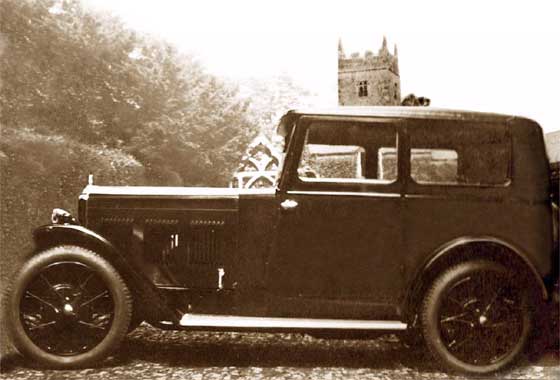
A
1931 Wolseley Hornet saloon style convertible
The Wolseley Hornet was a
lightweight saloon car produced by the Wolseley Motor Company from 1930 to
1935.
It had a six cylinder (1271cc) engine with a single overhead cam, and
hydraulic brakes. The engine was modified in 1932 to make it shorter and it was
moved forwards on the chassis. In 1935 the engine size was increased to
1378 cc.
Wolseley supplied the firsts cars as either an enclosed saloon with steel
or fabric body or open two seater. From 1931 it was available without the
saloon body, and was used as the basis for a number of sporting specials for
which the customer could choose a styling from a range of coachbuilders. In
1932 Wolsley added two and four seat coupés to the range. For its final year of
production the range was rationalised to a standard saloon and coupé.
A three speed gearbox was fitted to the earliest cars but this was upgraded
to a four speed in 1932 and fitted with synchromesh from 1933. A freewheel
mechanism could be ordered in 1934.The engine was also used in a range of MG
cars.
If you
run a Theosophy Group, please feel free
to use
any of the material on this site

1930s
Wolseley Hornet racing car circuiting the track in modern times
The Most Basic Theosophy
Website in the Universe
A quick overview of Theosophy
and the Theosophical Society
If you run a Theosophy Group you
can use this as an introductory handout.
Theosophy Cardiff’s Instant Guide
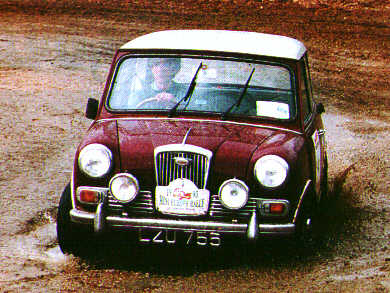
Wolseley
Hornet on a rally circa 1963
Theosophical Movement in Wales
as it separates into independent
groups that run do their own show

Early
1930s Wolseley Hornet customized roadster design
Basic
front mudguards not extending to runner boards.
Only
the driver gets a windscreen wiper

Patriotic
Wolseley Hornet on the race track in 1965
One liners and quick explanations
H P
Blavatsky is usually the only
Theosophist
that most people have ever
heard
of. Let’s put that right
The Voice of the Silence Website
An
Independent Theosophical Republic
Links
to Free Online Theosophy
Study
Resources; Courses, Writings,

Early
1930s Customized Wolseley Hornet with integrated front mudguards
and
runner boards. Two windscreen wipers on this one.
The main criteria for the inclusion of
links on this site is that they have some
relationship (however tenuous) to Theosophy
and are lightweight, amusing or entertaining.
Topics include Quantum Theory and Socks,
Dick Dastardly and Legendary Blues Singers.

Four
views of the car in the picture above
A selection of articles on Reincarnation
Provided in response to the large
number of enquiries we receive at
Cardiff Theosophical Society on this subject
The Voice of the Silence Website

Swallow Wolseley Hornet 1932

A
leaflet promoting the new hydrolastic suspension introduced in the mid sixties.
This
became standard on many BMC models including the Mini, 1100, 1300
&
1800 models. Suspension was maintained by means of a sealed fluid system
which
was claimed to be very comfortable but appeared to make some people
seasick
in the larger cars. As the cars got older, the suspension might burst
causing
the car’s suspension to collapse on one side meaning a difficult
drive
home or to a garage.
This is for
everyone, you don’t have to live
in Wales to
make good use of this Website

1930s
No
Aardvarks were harmed in the

A 1966 Wolseley Hornet
convertible by Crayford Engineering
Convertible 1960s Hornets
were not standard and were very rare as
were all convertibles in the
Mini range.
Crayford did a run of 57
Hornet convertibles for Heinz to be given
as prizes in a competition
Within the British Isles, The Adyar Theosophical Society
has Groups in;
Bangor*Basingstoke*Billericay*Birmingham*Blackburn*Bolton*Bournemouth
Bradford*Bristol*Camberley*Cardiff*Chester*Conwy*Coventry*Dundee*Edinburgh
Folkstone*Glasgow*Grimsby*Inverness*Isle of
Man*Lancaster*Leeds*Leicester
Letchworth*London*Manchester*Merseyside*Middlesborough*Newcastle upon
Tyne
North Devon*Northampton*Northern Ireland*Norwich*Nottingham
Perth*Republic of Ireland*Sidmouth*Southport*Sussex*Swansea*Torbay
Tunbridge Wells*Wallasey*Warrington*Wembley*Winchester*Worthing
The Spiritual Home of Urban Theosophy
The Earth Base for Evolutionary Theosophy
A
B
C
D
EFG
H
IJ
KL
M
N
OP
QR
S
T
UV
WXYZ
Complete Theosophical Glossary in Plain Text Format
1.22MB
__________________
& of course
you don’t need to live in Wales
to take advantage of this guide
_____________________
Camberley, Surrey, England GU15 - 2LF
Tekels Park to be Sold to a Developer
Concerns are raised about the fate of the wildlife as
The Spiritual Retreat, Tekels Park in Camberley,
Surrey, England is to be sold to a developer
Tekels Park is a 50 acre woodland park, purchased
for the Adyar
Theosophical Society in England in 1929.
In addition to concern about the park, many are
worried about
the future of the Tekels Park Deer
as they are not a protected species.
Many feel that the sale of a
sanctuary
for wildlife to a developer can only
mean
disaster for the park’s animals
In addition to concern about the
park,
many are worried about the future
of the Tekels Park Deer as they
Confusion as the Theoversity moves out of
Tekels Park to Southampton, Glastonbury &
Chorley in Lancashire while the leadership claim
that the Theosophical Society will carry on
using
Tekels Park despite its sale to a developer
Anyone planning a “Spiritual” stay at
the
Tekels Park Guest House should be
aware of the sale.
Theosophy talks of a compassionate
attitude
to animals and the sale of the Tekels
Park
sanctuary for wildlife to a developer
has
Future
of Tekels Park Badgers in Doubt
Party On!
Tekels Park Theosophy NOT
St Francis Church at Tekels Park
Tekels Park & the Loch Ness Monster
A Satirical view of
the sale of Tekels Park
in Camberley,
Surrey to a developer
The Toff’s Guide to the Sale of Tekels Park
What the men in top
hats have to
say about the sale
of Tekels Park
____________________
The Theosophy Cardiff
Guide to
Pendle Hill, Lancashire, England.
Quick
Explanations with Links to More Detailed Info
What is Theosophy ? Theosophy Defined (More Detail)
Three Fundamental Propositions Key Concepts of Theosophy
Cosmogenesis
Anthropogenesis
Root Races
Karma
Ascended Masters After Death States Reincarnation
The Seven Principles of Man Helena Petrovna Blavatsky
Colonel Henry Steel Olcott William Quan Judge
The Start of the Theosophical Society
History of the Theosophical Society
Theosophical Society Presidents
History of the Theosophical Society in Wales
The Three Objectives of the Theosophical Society
Explanation of the Theosophical Society Emblem
Glossaries of Theosophical Terms

Another
good example of a 1930s Wolseley Hornet
An Outstanding Introduction to Theosophy
By a student of Katherine Tingley
Elementary Theosophy Who is the Man? Body and Soul
Body, Soul and Spirit Reincarnation Karma

1960s
Riley Elf
Outwardly
the same as the Wolseley Hornet except for the badge & grill
A
bit more expensive
What Theosophy Is From the Absolute to Man
The Formation of a Solar System The Evolution of Life
The Constitution of Man After Death Reincarnation
The Purpose of Life The Planetary Chains
The Result of Theosophical Study

1930’s
Wolseley Hornet on a hill climb trial
An Outline of Theosophy
Charles Webster Leadbeater
Theosophy - What it is How is it Known? The Method of Observation
General Principles The Three Great Truths The Deity
Advantage Gained from this
Knowledge The Divine Scheme
The Constitution of Man The True Man Reincarnation
The Wider Outlook Death Man’s Past and Future
Cause and Effect What Theosophy does for us

Side
and rear view of a 1960s Wolseley Hornet
Try these if you are looking
for a local
Theosophy Group or Centre
UK Listing of Theosophical Groups
Please tell us about your UK Theosophy Group

1960s
Wolseley Hornet promotional leaflet
___________________
into categories and
presented according to relevance of website.
Web Directory
- Add Link - Submit Article - Online Store - Forum
______________________
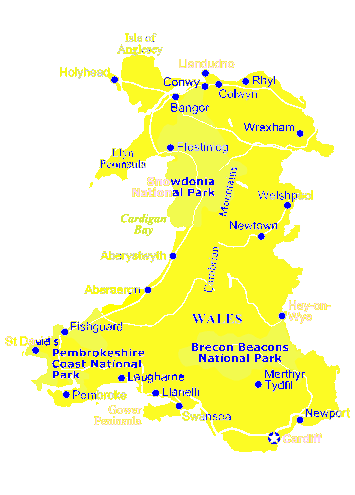
General pages about Wales, Welsh History
and The History of Theosophy in Wales
Wales is a
Principality within the United Kingdom and has an eastern
border with
England. The land area is just over 8,000 square miles.
Snowdon in North
Wales is the highest mountain at 3,650 feet.
The coastline is
almost 750 miles long. The population of Wales
as at the 2001 census is 2,946,200.
________________
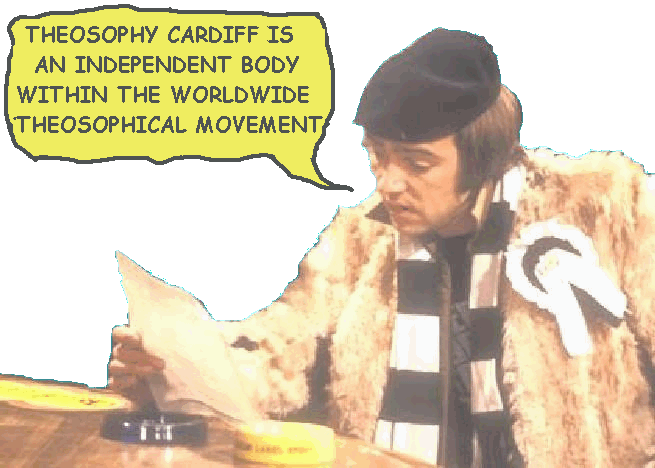
Bangor Conwy & Swansea Lodges are
members
of the Welsh Regional Association
(Formed 1993).
Theosophy Cardiff separated from the
Welsh Regional
Association in March 2008 and became an independent
body within the Theosophical Movement in March 2010
High
Drama & Worldwide Confusion
as
Theosophy Cardiff Separates from the
Welsh
Regional Association (formed 1993)
Theosophy Cardiff cancels its Affiliation
to the Adyar Based Theosophical Society
Cardiff, Wales, UK, CF24 – 1DL
